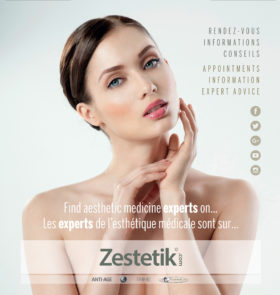By Dr Elena Romanova
Treating post-traumatic scars is one of the most difficult challenges for laser centres and clinics. There is a permanent, high demand for this type of treatment following accidental trauma or surgical procedures, particularly following aesthetic surgery.
Using lasers to treat scars is a relatively new alternative to classic treatments such as creams, massages and cortisone injections, or even improving the scar with surgery. The aesthetics market offers a wide range of devices. Nano and picosecond lasers, PDL (pulsed dye lasers), IPL (intense pulsed light), Erbium:Yag and CO2 ablative fractional lasers (AFL), and Erbium Glass non-ablative fractional lasers (NAFL) are the most commonly used. When treating scars, the two main questions to ask are: which laser should we use and when should we start treatment?
The answer to the first question is not always clear. The difficulty is not only choosing the right wavelength to use but also the huge diversity of scars to be treated. It is important to take various things into account: the thickness of the scar and presence of contractures, colour, pigmentation, pain or itching. In practice, we often use a combination of machines for optimal results. In order to systematise our knowledge and experience in the field of treating scars with lasers, the first guidelines have recently been published. These guidelines are based on the consensus of 26 experts from different countries.
Unfortunately, often there is no unanimous response due to the lack of random studies, but the first recommendations are there. As an example, it is recommended to start treating a hypertrophic scar (over 2mm thickness) with AFL, with 68% of experts suggesting using a fractional CO2 laser. Often, the laser will be used in combination with medicines in order to make it easier for the lasers to reach the scar tissue. With regard to treating atrophic scars, opinion is divided equally between NAFL and AFL. For the majority of experts, PDL is still the laser of choice for treating persistent erythema, but IPL and Nd:Yag lasers are also considered. Pain and itching are most often treated using APL and vascular lasers. Lasers with a short pulse are best for treating hyperpigmented scars.
It is never too late to treat a scar using lasers: this is the answer to the second question with regard to the best time to start treatment. Though it is never too late, can it ever be too early? In the same publication, this question was also addressed. The vast majority of experts would treat surgical scars in the month following surgery (9% just after closing, 59% upon removal of stitches and 23% after a month). Interesting data coming from random studies show that treatment with NAFL before the surgical procedure improves the final appearance of the scars.
For the time being, there are still many unanswered questions and further studies are required in order to draw up standardised treatment protocols. Nevertheless, a trend is starting to emerge: the early treatment of traumatic scars. Let’s see what the next few years hold!
Dr Elena Romanova: Doctor of medicine (France and Russia) and Molecular Biology, with inter-university degrees in Mor![]() phological/Anti-Aging Medicine and Medical Lasers. Trained in Dr Di Maio’s MD Codes. Since 2014, she has practised anti-aging and morphological medicine in Paris.
phological/Anti-Aging Medicine and Medical Lasers. Trained in Dr Di Maio’s MD Codes. Since 2014, she has practised anti-aging and morphological medicine in Paris.
more: dr-romanova.fr







